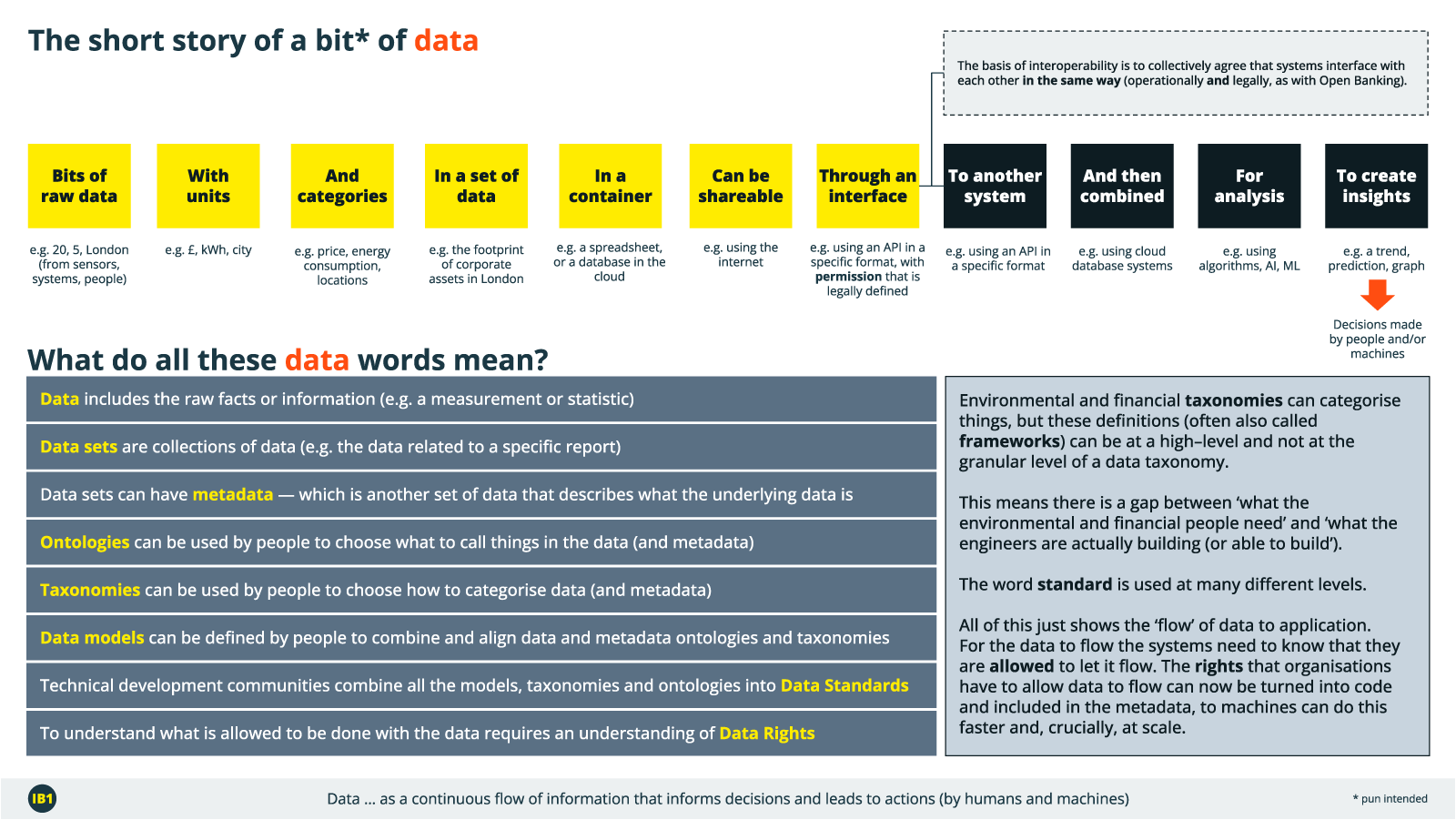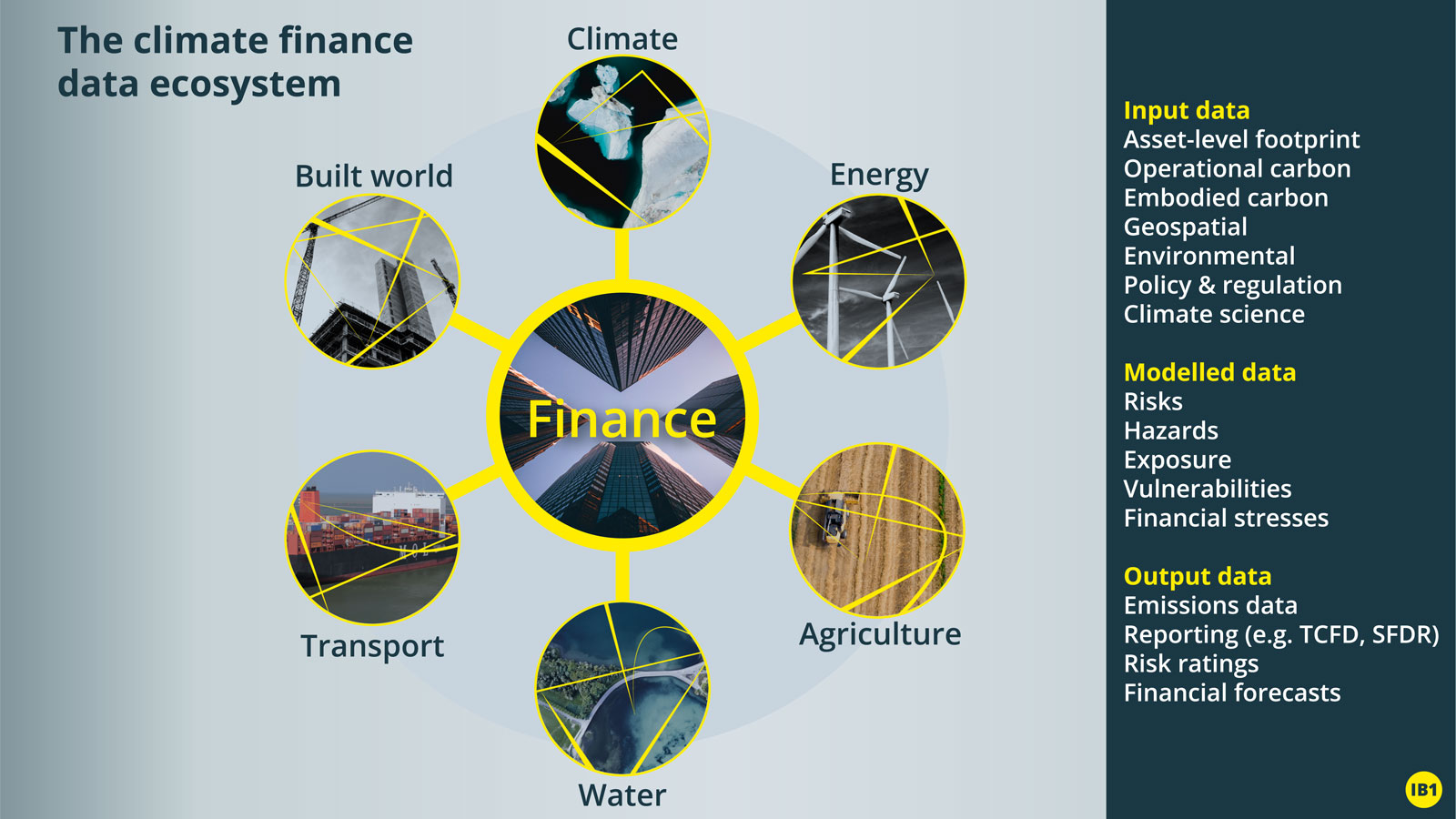We consider Net Zero to mean ‘net zero impact’ on our ecosystems
Not just GHG emissions but harms on our climate, nature and the biosphere as a whole
Gavin Starks, Founder, Icebreaker One
What is Net-Zero Data?
Data that connects finance, industry, and our environment to inform net-zero decisions.
Data for action, not just for knowledge: available to the right people at the right time.
What is Net-Zero Financial Data?
Data used to assess net-zero investments, prove/demonstrate net-zero outcomes, and/or related to net-zero reporting.
What is Net-Zero Industry Data?
Data used to deliver net-zero outcomes in design, construction, operation and decommissioning across our infrastructure (energy, water, transport, agriculture, built world).
What is Net-Zero Environment Data?
Data about our environment and/or its impacts.
How can we unlock net-zero data flow at scale?
Access to most of the world’s data is restricted in some way. We are unlocking data flow by creating processes, policies, and guardrails that make sure data is comparable, machine-readable, and trusted. To deliver this requires the development and operational implementation of a Trust Framework that spans sectors. To support development we have created a set of Icebreaker Principles for net zero data: https://ib1.org/icebreaker-principles/
Example: What is a Net Zero Energy Systems Architecture?
The Moving to Action: Digitalising our Net Zero Energy Future report (an independent report to inform UK energy Digitalisation Governance) defines:
Economic System: the way in which an economy works, for example, the way it makes money and uses goods and labour.
System Architecture: fundamental concepts or properties of a system in its environment embodied in its elements, relationships, and in the principles of its design and evolution.
Net Zero Energy Systems Architecture: (energy) the way in which a decarbonised Economic System’s fundamental
concepts or properties in its environment work; this is embodied in its elements, relationships, and in the principles of its design and evolution. For example, the way it makes use of its elements and their relationships to carry out activities that ultimately describe how money is made and the use of goods and labour.
What is ‘data’?


